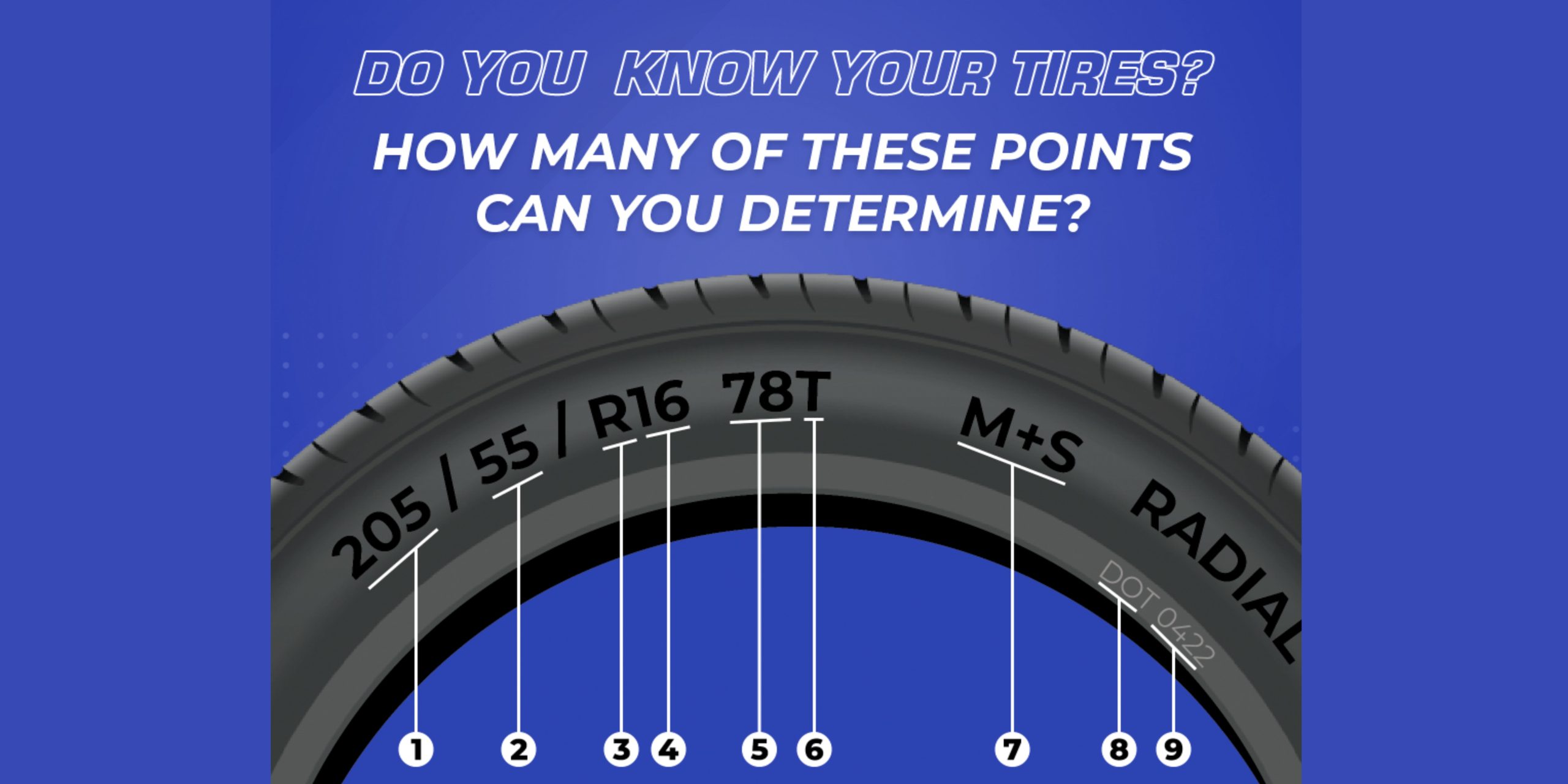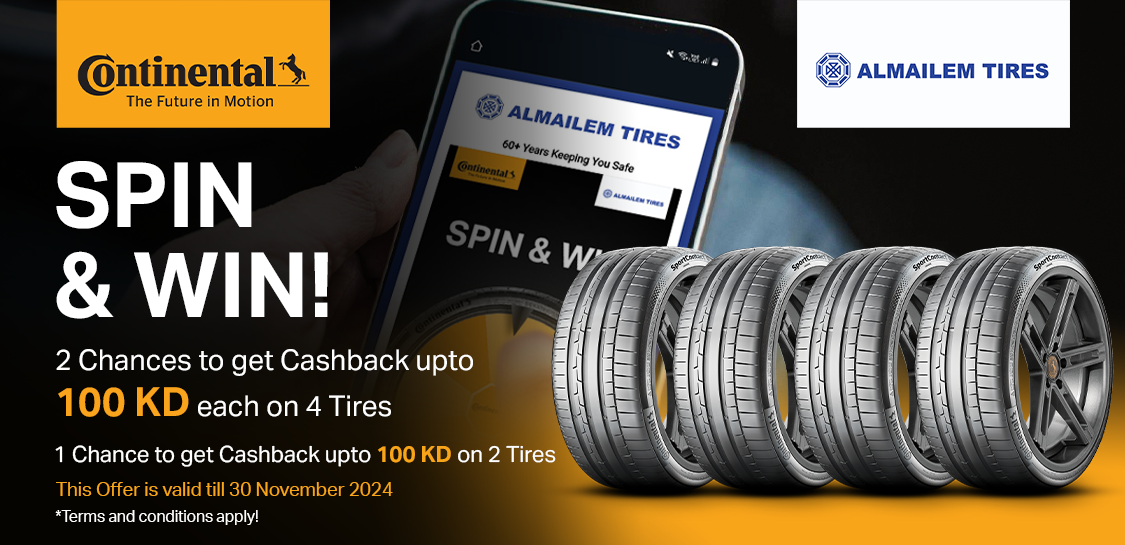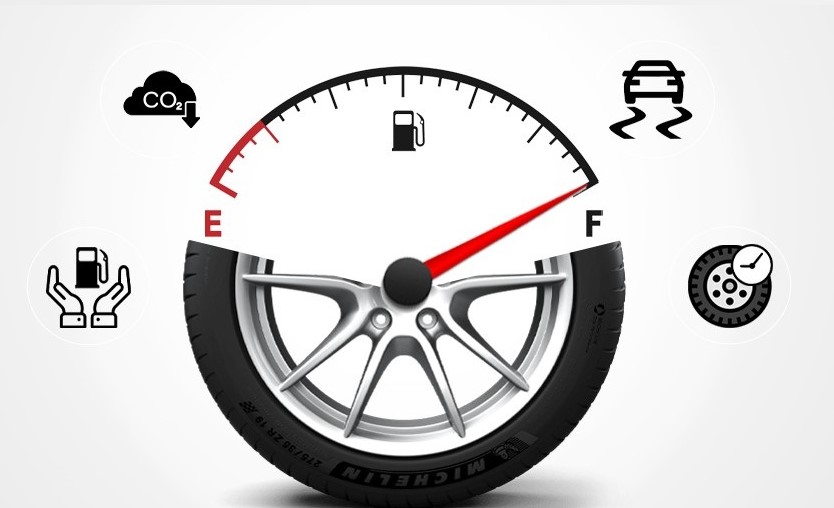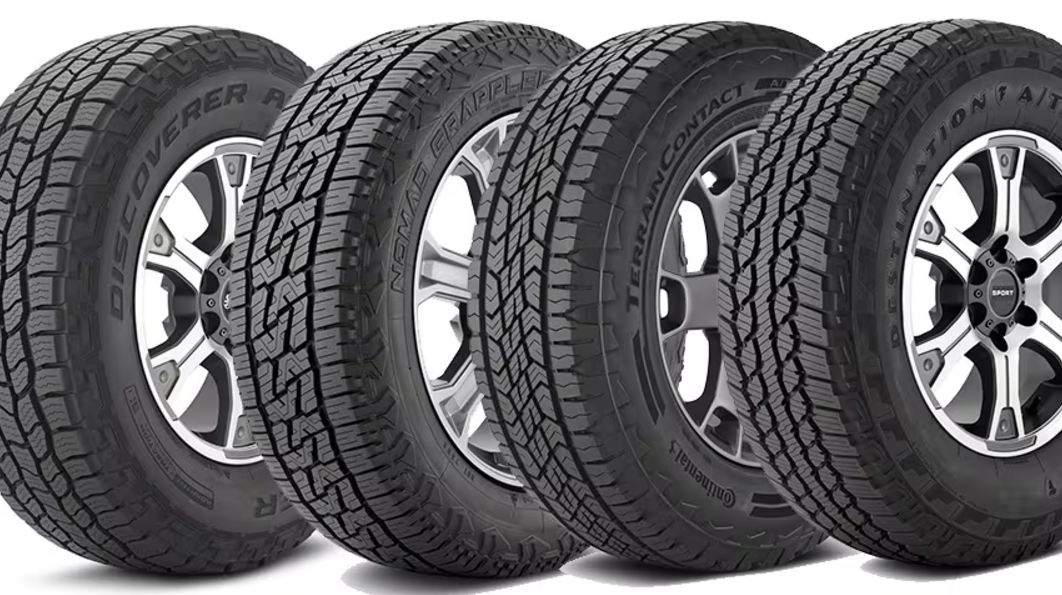
Decoding the Tire Markings: Everything You Need to Know
Posted On21.06.2023Have you ever noticed the markings on the tire? What exactly are the numbers on the tires? If you are planning to replace or buy a new tire for your car, then it is necessary to know the exact number and alphabet of the tire. For the average car owner, the markings and codes on tires can be overwhelming and quite ambiguous. We’ll break down the various markings and codes found on car tires and explain what they mean.
These tire labels include details on the tire’s dimensions, manufacturing date, specifications, and safety certifications. Every driver should understand these tire details on their car; this blog will provide you with a brief description of your tires. So let’s dive in and explore the world of car tire markings!
A Guide to Deciphering Car Tire Markings
If you’re in a workshop or outlet for new tires, it’s essential to have a good understanding of the product you’re buying. By decoding the markings on your tire’s sidewall, you can gain valuable insights into its size, age, speed rating, and load capacity.
Let’s have a closer look at car tire markings and help you understand what they mean so that you can choose the perfect set of tires for your vehicle.
Example: P 225/45 R 18 95 H
- P-Tires are designed for vehicles that carry people, like cars.
- Here 225 shows the width of the tire, and this is the first number started with tire markings.
- Here the aspect ratio is 45, which means the height of the tire is 45% of the width of the tire.
- Since the letter R is present in our example, the construction is radial.
- The next number is 18 in our reference and shows the diameter of the wheel rim.
- The next number, 95, indicates the load index of the tire.
- Here in our reference, it is H, which indicates a speed of 209 kph.
Application of the Tire: P or LT
As you are aware, tire sidewall markings have codes that start with letters and then include some numbers. P/Lt, where P means passenger and LT means light truck, shows the application of the tire.
- P-Tires are designed for vehicles that carry people, like cars.
- LT Tires are designed for vehicles that carry goods and cargo, like trucks.
This will be necessary in order to withstand the weight of the load on the tire.
Width of the Sidewall
The number after P/LT indicates the tire width in millimeters from one sidewall to another. This is called the nominal width of the tire.
Aspect Ratio of the Tire
The aspect ratio of the tires is shown in percentage. Tire markers get the aspect ratio by dividing the height of the rim by its width. A lower aspect ratio is better than a higher aspect ratio if you consider the performance.
The aspect ratio of the tire = Height of the rim/width of the rim.
Construction of the Tire
After the aspect ratio, the next is a letter, and it represents the type of construction of the inner part of the tire.
R is the letter in our example, so the construction is radial construction, which means the internal ply cords in the tire are oriented in the radial direction from one to the other and are at 90 degrees to the rotation.
If the letter comes as D, then it is diagonal construction, and if B, then bias-ply construction.
Also know about: Types of car tires
Diameter of the Tire Rim
It gives information on the diameter of the wheel rim of the tire in inches. This measurement is important because it determines the size of the tire that can be mounted on the rim, and therefore affects the overall size and performance of the vehicle
The Load Index of the Tire
The next number indicates the load index, and here it is 95. This code indicates the maximum load that a tire can hold when it is fully inflated.
This normally ranges from 75 to 105, indicating the unique capacity of the load that a vehicle can support. This is also available on the load index chart in your car.
Speed Rating for the Car
The letters from A to Z, followed by the load index, indicate the speed rating. Each letter shows the maximum speed a tire can maintain under the allowed load capacity.
Even though a tire can have a specific speed index, you have to follow the rules of the speed limit for your safety.
Inflation Pressure
Maximum inflation pressure is the highest amount of air pressure that can be safely used to inflate a car tire, whereas cold inflation pressure is when the vehicle is in an idle position.
This can be expressed in PSI, and underinflation leads to a car accident, so it should be better to follow the maximum inflation pressure recommended on the tire.
Treadwear Number and Grooves
A high tread number is one of the key requirements for a tire. As you are aware, tires will eventually wear out, so choose a tire with a high tread number that unquestionably has more grip and will be long-lasting. Tires are made up of a pattern called grooves that help them gain traction on slippery roads.
Traction Grade for Your Tire
Based on how they behaved on the slippery road, the tires’ varied traction grades are AA, A, B, or C. This rating is important because it can affect your vehicle’s brake service and overall safety in wet conditions.
When you hit the brake and the car stops in the rain, there will be a delay between these actions. This may increase the risk of accidents or collisions due to inadequate braking performance.In order to avoid this, choose a tire with sufficient thread and a better traction grade. The tire would have better traction on the ground if it had more tread. The traction grade describes how far the tires travel on a slippery road before breaking.
You can read more about tyre tread patterns
Tire Grade in Various Temperatures
The temperature rating on a tire indicates how much heat it can endure. The type “A” tire can endure higher heat than other types of tires without breaking.
Rotation of the Tire
It indicates the direction of the rotation of the tire as symmetric or asymmetric. The rotation direction of the tire is indicated by an arrow or some other symbol on the sidewall. This symbol indicates the direction in which the tire should rotate when installed on the vehicle. Some tire models may also have additional markings to indicate which side of the tire should face outward.
The Manufacturing Date (DOT)
The production date is the only aspect of the tire that the average person can comprehend. The sidewall also displays the week and year of the tire’s manufacture, which gives you an indication of its validity before you buy.
If it’s 36/2020, the tire will be produced during the 36th week of 2020. The name of the manufacturing company is also marked on the majority of the tire’s sidewall.
If you are planning to buy tires in Kuwait, AlMailem Group offers various tires for diverse applications like passenger cars, sports cars, commercial vehicles, etc. We are the largest tire retail network in Kuwait, where you can buy the best tires from top brands.




